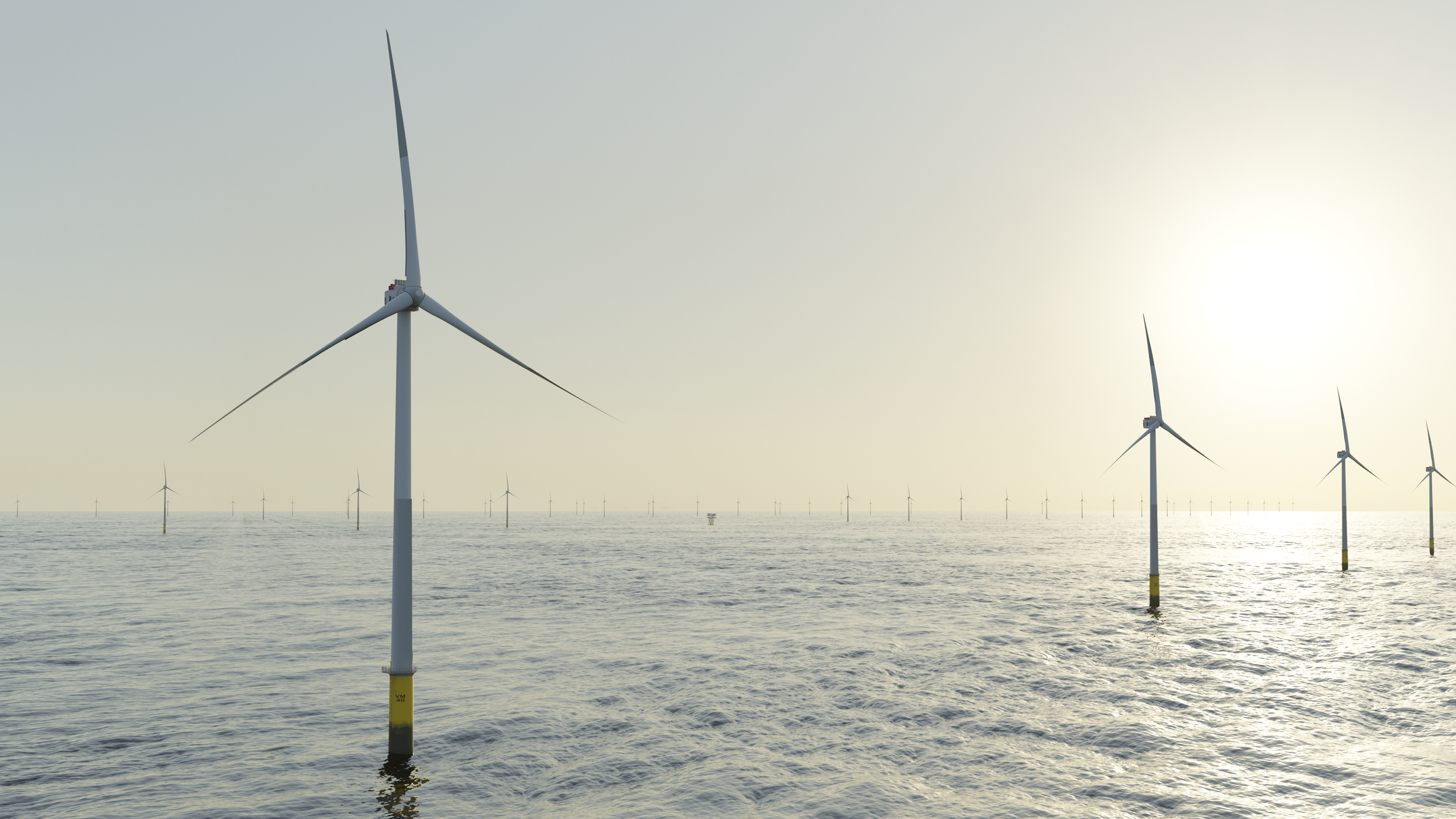
Carolina Long Bay: A Visual Impact Case Study
Southeast wind coalition commissions Unasys to develop visual simulations of Carolina Long Bay offshore wind farm, North Carolina
In this study, developed with the support of the British consulate in Atlanta, GA, we have relied on our deep expertise, background, and cutting-edge digital technologies, engineering, and data analysis. Unasys have several decades of experience in modelling offshore oil and gas assets, and more recently offshore wind tracts In and around the UKCS. We created a sophisticated, detailed, and realistic model linked to the underlying data, of the visual impact that will result from current plans for offshore wind development at the Carolina Long Bay wind energy area.
Upon conducting the analysis, our professional assessment and conclusions is that the wind turbines will have negligible visual impact
Offshore wind for North Carolina (OSWNC) is a coalition of organisations working together to ensure that North Carolina is positioned as a natural leader for responsible offshore wind by advocating policies and regulations necessary to achieve a just and equitable adoption of North Carolinas offshore wind energy targets of 2.86GW by 2030, and 8.0GW by 2040.
The challenge
Offshore wind is an important pillar in the goal of North Carolinas plans to achieve a 70% reduction in carbon emissions by 2030 -based on 2005 levels- and net zero emissions by 2050. As with any new technology, concerns remain regarding how offshore wind will be developed and deployed, one of these concerns relates to the potential visual impact of wind turbines off the North Carolina coast.
Visual impacts have been the chief thorn for coastal governments In Brunswick County, N.C., which banded together last year in passing resolutions opposing turbines any closer Than 24 nautical miles. Despite repeated requests to push the buildable barrier back at least that far, the Bureau of Energy management (BOEM) has resisted said requests and stuck to its 128,000-acre lease space. Their resistance has now been justified, which had the nearest turbine 17 nautical miles from Blad head island, or the nearest point onshore
The solution
In the last 10 years, the global growth in offshore wind has been significant, with momentum in the USA gathering pace. With such growth comes complexity, the logistical challenges of installing arrays of turbines requires good definition, stringent planning, efficient generation of, access to, and management of complex data sets. Digital twin technology is a critical means by which the life cycle phases of offshore wind farms can be de-risked and numerical experiments on farm orientation, inter array, and export cable routing, allow scenario planning to be undertaken ahead of any firm investment.
As a nascent Industry, it is essential that as much as possible is done to facilitate strategic asset management from the outset. Digital twinning and asset visualisation offers this opportunity - the work done to date by Unasys for its digital North Sea (DNS) project, supported by the UK and Scottish governments) is of direct relevance to other regions around the world including the eastern seaboard of the US.
Moreover, the progress and algorithms developed for the North Sea are readily adaptable to the USA offshore wind sector. The British consulate in Atlanta and the Foreign and Commonwealth office (FCO) in Washington DC were introduced to Unasys via the Department of International trade (DIT) in the UK.
They chose Unasys because of their innovative technology that is able to digitally build, visualise, and better understand the dynamics of how our facilities are put together and interact with one another.
Results and benefits
The field simulations would provide the region a realistic anticipated view of the windfarm from 3 different viewing points along the coast. An open house allowed the public to get a glimpse of what the future view of the wind turbines might entail. Such was the interest in the development, the room was full for the entire time.
No one claimed they could see the turbines when viewed as intended, however when viewed closely or zoomed in, the turbines dot the horizon. Bald Head Island mayor, Peter Quinn, said he could not see the turbines in the depictions, he said his visual concerns were quelled “I am satisfied”.
The Wilmington chamber of commerce board of directors voted to approve a resolution supporting “continued exploration of the bureau of energy management plan for the Carolina Long Bay offshore wind lease to be auctioned”.
The board of directors discussed visual and environmental impact before passing the resolution of support. A report released in January 2022, by the south-eastern wind coalition found that constructing 2.8GW of offshore wind – the benchmark set in place by North Carolina state governor Cooper, would spur an economic benefit to the state of 4.6 billion dollars.
Project sanction
The visual impact study carried out by Unasys has contributed to project sanction. The Bureau of energy management released a final sale notice. The Carolina Long Bay area tract was auctioned and has now been awarded.
Unasys: Your delivery partner


